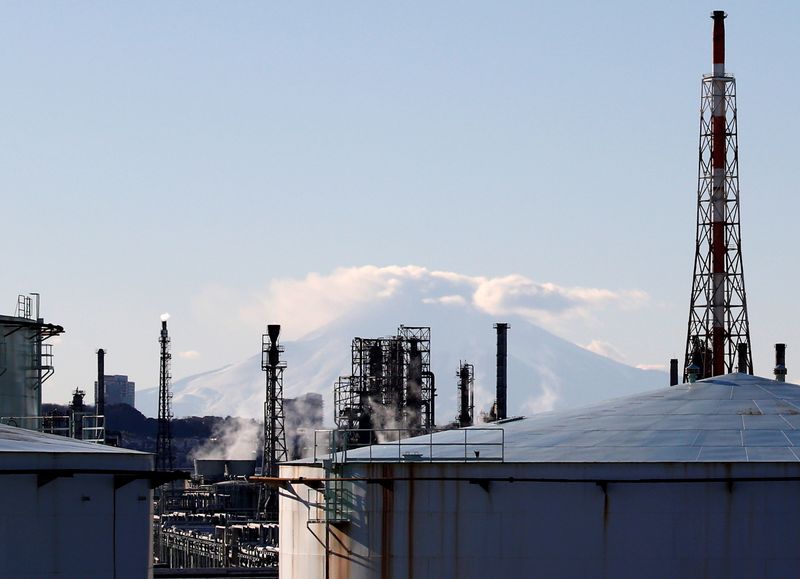By Kantaro Komiya
TOKYO (Reuters) - Japan's core machinery orders unexpectedly fell in August, underlining persistent pressure on businesses and the broader economy as firms struggle to shake off the drag from the coronavirus pandemic.
The Cabinet Office data on Wednesday showed core orders, a highly volatile data series regarded as an indicator of capital spending in the coming six to nine months, fell 2.4% in August from the previous month, dragged down by the biggest decline in orders from manufacturers in more than five years.
The contraction compared with July's 0.9% rise, while a Reuters poll of economists had predicted 1.7% growth.
In comments accompanying the data, the government downgraded its assessment on machinery orders for the first time in six months, saying a recovery in the series appeared to be stalling.
"The picture has been 'solid manufacturers and weak non-manufacturers' so far, but the gap is narrowing," Masato Koike, an economist at Dai-ichi Life Research Institute said.
The export-oriented manufacturing sector faces headwinds ranging from a global economic slowdown to supply chain bottlenecks, while service-oriented non-manufacturers have a clearer path to recovery as the domestic COVID-19 situation improves, Koike added.
The orders data came about a week after the inauguration of new Prime Minister Fumio Kishida, after his predecessor Yoshihide Suga saw his support undermined by surging coronavirus infections and protracted restrictions.
While Japanese firms have so far provided momentum to the economy's recovery through solid output, exports and capital expenditure, the outlook points to a bumpy ride.
Manufacturers' sentiment dropped to a six-month low in October due to an enduring supply shortage and soaring material costs, the Reuters Tankan showed on Wednesday.
Following an annualised 1.9% gross-domestic product (GDP) growth in the second quarter, analysts forecast a smaller gain in Japan's July-September GDP, indicating sluggish - if not shrinking - private consumption.
By sector, manufacturers' orders declined 13.4% month-on-month in August, marking the first decline in five months, due to by weaker demand from sectors such as electronic machines, production machines and shipmakers. It was the biggest fall since February 2016.
Orders from non-manufacturers increased 7.1% after a 9.5% dip in July, led by demands from wholesale and retail sellers and logistics companies.
External orders, which are not counted as core orders, fell 14.7%, slipping after 24.1% growth in the previous month.
"The results were weaker ... but it didn't indicate machinery orders will extend declines ahead," said Shintaro Inagaki, senior market economist at Mizuho Securities.

"Concerns like the chip shortage and recent commodity price inflation are not something that continue long-term, but they are likely to be dispelled by next spring."
Compared with a year earlier, core orders, which exclude those for ships and electric utilities, expanded 17.0% in August, the data showed, reflecting a double-digit decline in the same month in 2020. Economists polled by Reuters had predicted a 14.7% jump.